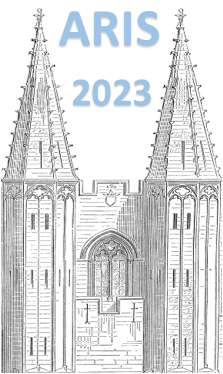Orateur
Description
Antimony (Sb) contains 51 protons, one proton above the magic $Z = 50$ proton shell closure. Therefore, its nuclear magnetic moments serve as an ideal candidate to probe the proton single particle behavior along the Sb isotopic chain, while its quadrupole moments shed light on collective effects as a function of neutron number towards the shell closure at $N = 82$.
Phenomenological shell-model calculations work well in the mass region around magic tin. Moreover, ab initio methods such as the valence-space in-medium similarity renormalization group (VS-IMSRG) have recently expanded their scope and are now capable of computing nuclear properties around $Z = 50$. Following collinear laser spectroscopy measurements of the antimony isotopic chain from $^{112-133}$Sb, the experimental magnetic and quadrupole moments are compared to their calculation in the phenomenological shell-model and VS-IMSRG. Since both nuclear models employ the same valence-space diagonalization, their full comparison as well as the artificial use of the shell model’s effective g-factors and charges in VS-IMSRG allows to investigate the operator-evolution within VS-IMSRG separated from the obtained wave functions.
This contribution will present the new experimental results from collinear laser spectroscopy and discuss the underlying physics with the help of state-of-the-art shell-model and ab initio calculations.

